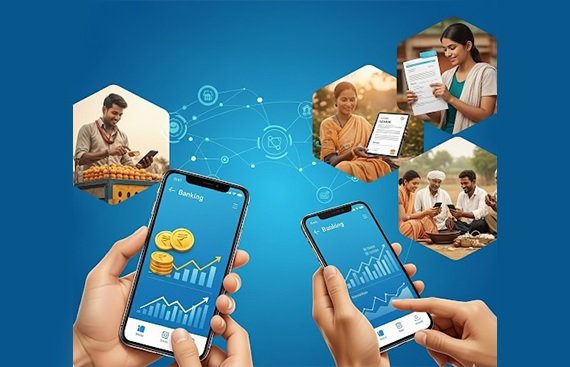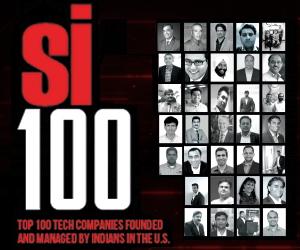Unlocking Credit for India's Underbanked through Digital Innovation

- Fintech expands credit access to underbanked Indians
- AI and India Stack enable instant digital loan approvals
- Scams, AI bias, and RBI rules require careful oversight
For decades, getting a loan in India was like walking into a fortress that needed a spotless credit score to get past the gates. But what about the millions who never got the chance to build one? Think of gig workers juggling delivery shifts, young professionals just stepping into the workforce, or first-time borrowers dreaming of their own homes. Traditional banks rarely looked their way. That’s where India’s fintech revolution has begun rewriting the rules.
Today, nearly a billion Indians still lack formal credit access so lenders are deploying mobile-first, data-driven tools to bridge this gap.
For example, platform-driven loan apps use real-time bank and payment data to underwrite small, unsecured loans to ride-hail drivers and delivery couriers. By leveraging digital identity systems (like Aadhaar e-KYC) and online transaction records, these lenders can serve a new generation of creditworthy customers. As one expert notes, fintechs are clearly serving an unmet need for credit that traditional banks have not satisfied.
Saroj Topno Mittra, Director, Margdarshak, says, "Digital solutions and new technologies also offer great potential to overcome the hurdles of balanced socioeconomic development. With two-thirds of the world's population now connected to mobile devices, the digital channel is opening up new opportunities to reach unserved and underserved markets more quickly and efficiently".
The New Face of Lending
Alternative Credit Scoring
Fintech lenders use nontraditional data to rate borrowers. Instead of relying solely on CIBIL scores and paperwork, they analyze bank statements, GST filings, UPI and mobile wallet transactions, e-Commerce histories, social media profiles, and even smartphone usage patterns. Machine learning algorithms ingest tens of thousands of data points to create a profile of repayment ability.
For instance, one AI-based underwriting platform evaluates a user’s digital footprint from bank balance trends to Facebook/LinkedIn activity to approve or reject a loan in minutes. These systems can spot subtle patterns (spending cycles, cash inflows) that indicate financial stability, making it possible to lend to ‘thin-file’ customers with little or no credit history.
Apps Over Branches
Nearly all new lenders are smartphone apps designed for easy use. Borrowers can apply via a mobile app or website, complete e-KYC (often through Aadhaar OTP or video calls), and get instant sanction. Apps like EarlySalary, KreditBee, and others offer fully digital onboarding and rapid disbursal of small personal loans. By contrast, traditional banks would take days of paperwork and verification. These platforms often partner with banks or NBFCs in the backend.
For example, the mobile wallet-based platform Dhani (by Indiabulls) disburses Rs 1,000-Rs 50,000 loans via its app. In one year it gave loans to over 3.5 million first-time borrowers.
Also Read: Mulamoottil Financiers: Facilitating Quick Credit Access to the Unbanked Rural Population of Kerala
The Phone as a Bank
The India Stack of digital infrastructure Aadhaar for identity, DigiLocker for documents, and the Account Aggregator (AA) framework enables remote onboarding. Lenders use Aadhaar’s e-KYC service to verify customers instantly via fingerprint or OTP, reducing paperwork. New RBI guidelines allow Aadhaar-based e-KYC for small loans up to Rs 50,000 without face-to-face verification.
Similarly, DigiLocker integration lets borrowers link digital copies of PAN, address proof or pay slips. These tools cut traditional bottlenecks, as the Unified Lending Interface (ULI) framework notes, integrating Aadhaar and DigiLocker ‘minimises bottlenecks in traditional lending processes’. In practice, a borrower’s phone can be a full-service branch from ID verification to loan disbursal via UPI eliminating the need to visit banks.
RBI’s ULI Revolution
Building on UPI’s success, the RBI’s new ULI platform is open infrastructure that connects lenders, fintechs, and data providers through APIs. ULI aggregates a borrower’s data (bank statements, GST returns, utility payments, transaction history, etc.) with consent. This lets lenders underwrite micro-loans even with no credit bureau history.
For example, the RBI Innovation Hub is piloting gig-worker loans that tap into Uber/Ola trip data and Swiggy/Zomato delivery logs as proof-of-income. In a ULI trial so far, over 600,000 loans (Rs 27,000 crore) have been disbursed via this consent-layered ecosystem. The ULI also enforces compliance: all connected lenders must follow RBI’s digital-lending rules, ensuring borrower protection even as credit expands.
Real Stories of Digital Lending Triumphs
HDFC Bank’s GIGA Program
Recognizing 30 million gig workers with limited credit access, HDFC Bank launched ‘GIGA’ a digital-first lending suite for freelancers (Aug 2024). GIGA offers flexible savings accounts, collateral-free business, car, two-wheeler loans, and insurance tailored to gig workers’ needs. The bank conducted deep consumer research to design the products. By using mobile apps and relaxed KYC for small loans, HDFC is bringing formal credit to drivers, delivery personnel, and independent contractors who often rely on cash.
RBI Innovation Hub + Vivifi (Gig Loans Pilot)
The RBI Innovation Hub partnered with fintech Vivifi Finance to pilot unsecured loans for cab and delivery drivers. Launched in late 2024, the platform uses drivers’ alternate data (ride-earnings records, digital payments, employment data) to underwrite loans.
For example, a driver’s bank statement plus app data (trips per week, ratings) feed an AI model that approves loans on request. The pilot feeds into the ULI, once mature, it will route gig-worker borrowers onto the unified credit network. This approach bypasses traditional salary slips (which drivers lack) by proving creditworthiness through consistent gig incomes.
Hidden Challenges of Digital Lending
![]()
- Scams and Unauthorized Apps: The rise of digital lending has attracted scammers. Hundreds of unauthorized apps masquerade as legit lenders, stealing data, charging hidden fees, or harassing borrowers. Regulators and platforms like Google have removed thousands of illicit apps, but threats persist. Responsible lenders strengthen device-binding checks and educate users to rely on official channels.
- AI Pitfalls and Fairness: AI models can encode biases, disadvantaging women, low-income groups, or borrowers without digital footprints. Lenders diversify data inputs and audit systems, but transparency remains limited.
- Loan Risks: High-interest, unsecured loans raise credit and borrower stress concerns.
- Regulatory Uncertainty: Evolving data privacy and RBI rules require continuous adaptation.
Wrapping It Up!
India’s nascent digital credit ecosystem is redefining lending. By turning phones into banks and data into credit, fintechs are opening doors for millions once ignored. The journey isn’t without risks, but with responsible practices, India’s underbanked can finally step into a future where access, speed, and fairness redefine financial inclusion.

